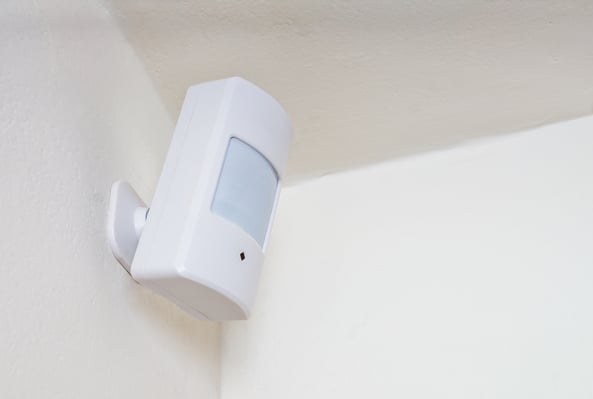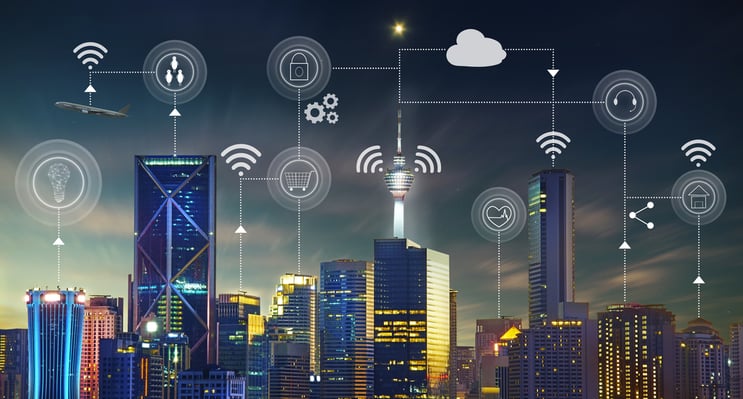Energy efficiency, water conservation and clean energy have gained importance in the construction industry over the past few decades. Many building owners are aware of the benefits of LED lighting and high-efficiency motors, among other technologies. However, buildings can utilize resources even more efficiently if MEP systems are controlled by a smart platform. This creates many opportunities for the Internet of Things (IoT).
Traditionally, building systems such as lighting, air conditioning and space heating operate with manual controls. However, the needs of a building and its occupants are constantly changing and it is impractical to constantly adjust manual controls. To achieve maximum performance, building systems must measure operating conditions and adjust. This is only possible by adding sensors, which play a key role in smart building systems.
Make your building systems smarter and reduce your energy and water bills.
Automatic sensors and controls can improve the economics of an energy efficiency project. For example, a ventilation system saves a lot of energy if all air handlers are equipped with high-efficiency motors. However, even greater savings are possible if presence sensors are used to adjust the air flow.
(Read more: Demand-controlled ventilation).
Selecting the right sensor for each application
There is a wide variety of sensors and their prices vary significantly depending on the application. When selecting sensors, there are two important factors to consider:
- The variables that must be monitored.
- The necessary accuracy and precision.
You will often find that multiple sensors measure the same variable with different methods, and it is important to select the best match for each application. Some sensors are also susceptible to external conditions, and this may limit their use in certain applications.
Consider occupancy sensors used to control light fixtures: they can be ultrasonic, infrared, or dual. Infrared sensors require a direct line of sight between themselves and occupants, while ultrasonic sensors can detect occupants behind obstacles. However, ultrasonic sensors may malfunction when they are close to sources of noise or vibration.

When there are many detection methods available for the same variable, differences in cost and accuracy can be expected. Ideally, the sensor should have adequate accuracy for the intended application, but excessive accuracy will waste money. The most accurate detection methods are typically the most expensive.
Combining Sensors with Enhanced Reality Systems
The combination of sensors and Building Information Modeling (BIM) creates many possibilities. For example, BIM models can be automatically updated with information collected by sensors. This way, maintenance personnel can more easily monitor hard-to-reach equipment and components. Engineers and other technicians can also wear hard hats to view important data during an on-site inspection.
Augmented reality is very useful when working with variables that are undetectable by humans. For example, you can use helmet and sensor data to “see” differences in temperature, electrical current, air flows, water flow within piping, etc. This feature makes troubleshooting and inspections much easier while improving workplace safety. When dangers like high temperatures become visible with augmented reality, they can be avoided more easily.
The next generation of sensors
According to MIT researchers, photovoltaic technology can greatly expand the applications of sensors. Conventional sensors use batteries or external power sources, but this is impractical for a large number of sensors. However, the problem can be solved with miniature photovoltaic cells.

The proposed photovoltaic technology for sensors is very different from conventional solar panels. Instead of using heavy solar cells made of silicon, sensors can use thin-film perovskite cells, which are flexible and suitable for virtually any surface. This concept can be used to harvest energy from any light source, not just the sun, in both indoor and outdoor applications.
- Miniature photovoltaic cells can be combined with RFID technology to make sensors completely autonomous.
- While the photovoltaic cell collects energy from light sources, the RFID tag allows data transmission with minimal energy consumption.
Printable photovoltaic cells are much less efficient than conventional solar panels, but their energy production is sufficient for sensors. The light weight, low cost and flexibility of perovskite cells also make them ideal for instrumentation.
Photovoltaic-powered sensors and RFID tags can be deployed anywhere in a building, gathering abundant information. A Building Management System (BMS) can use this data to optimize energy consumption and improve efficiency.

